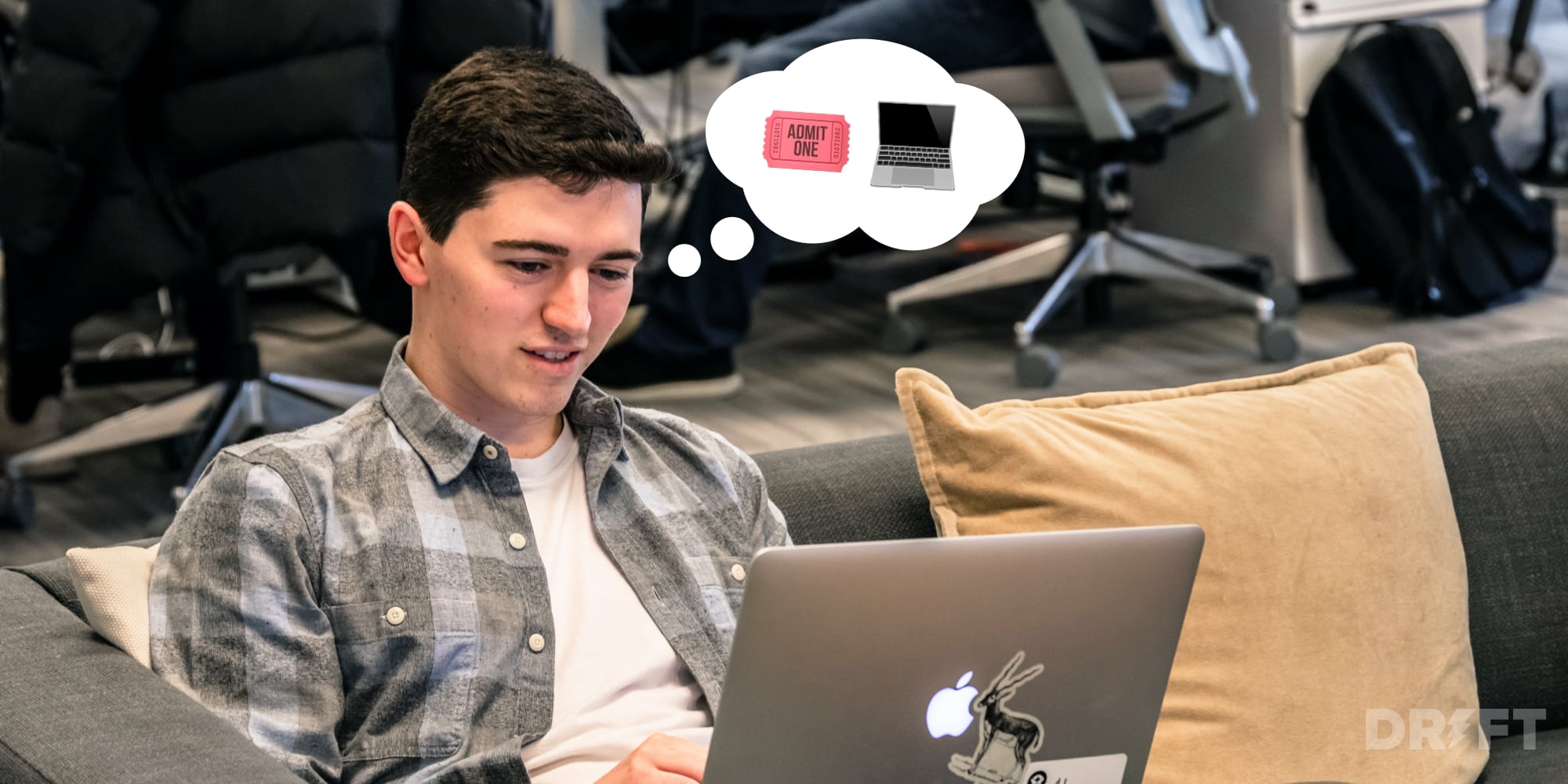
Back in 2019, when you could meet people face-to-face, grab coffee with someone, and even shake their hands, 73% of marketers said that they relied on in-person events to generate pipeline and revenue.
With the current state of affairs, nearly every B2B company has had to shift their go-to-market model to prioritize digital. In fact, McKinsey found that digital interactions for B2B buyers have doubled in importance during COVID-19.
But now that the entire buying journey is digital, how do you humanize it?
Kate Adams, VP of Marketing at Drift, got together with Tessa Barron, VP of Marketing at ON24, and came up with five steps B2B companies can take to retain the human touch while taking their events digital.
As Tessa says, “Digital used to be the way you would get someone to The Thing. Now it is The Thing. It’s not only the channel, but the offer as well.”
Ready to dive in?
Step 1: Maximize Webinar Promotion and Registrations at Scale
Webinar registrations have always relied heavily on email marketing. Historically, an increase in number of emails sent has lead to a decline in number of responses. However, that trend has shifted recently. The week of March 16th saw a 29% increase in email volume, with a 53% increase in open rates.
But, Kate says, marketing starts to breakdown after the email is sent because the webinar registration process still has way too much friction.
One example is when you already have an email address for someone in your database, but you make them give it to you again in order to register for a webinar. So you send them to a long form with multiple fields (that they’ve already filled out before). Would you really blame them if they just gave up?
Instead, Kate recommends a conversational approach, which could involve any of the following:
- Conversational CTAs
- Webinar Bots
- Formless registration experiences
Conversational CTAs, like this one, can increase webinar registrations by up to 95%.
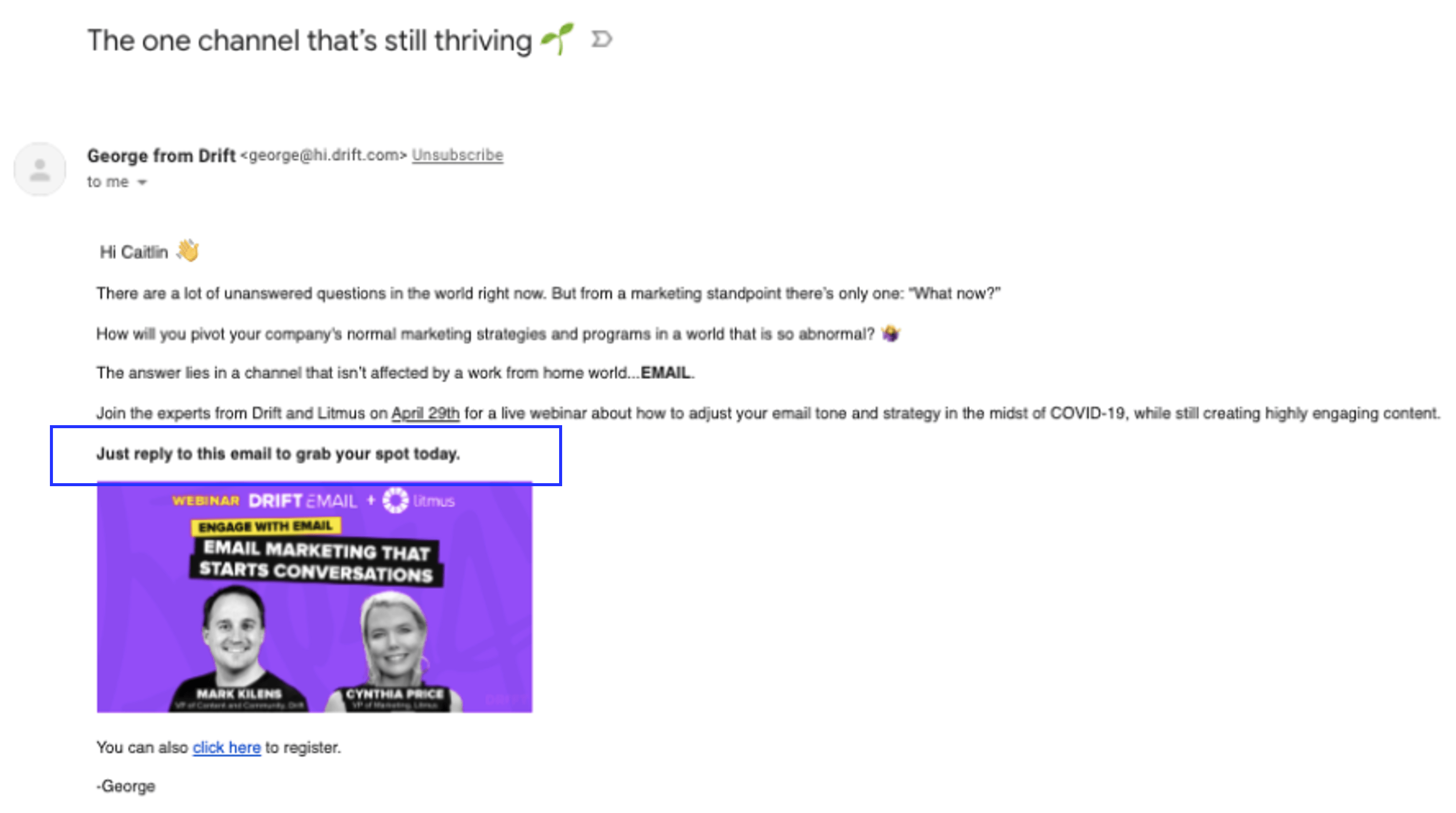
A Webinar Bot is used to automate the process by allowing the customer to register by simply responding to the email and expressing their interest.

Also consider other formless registration experiences, such as this one, that doesn’t require a known visitor to provide their email again. Instead, it confirms their registration and lets them add the event to their calendar.
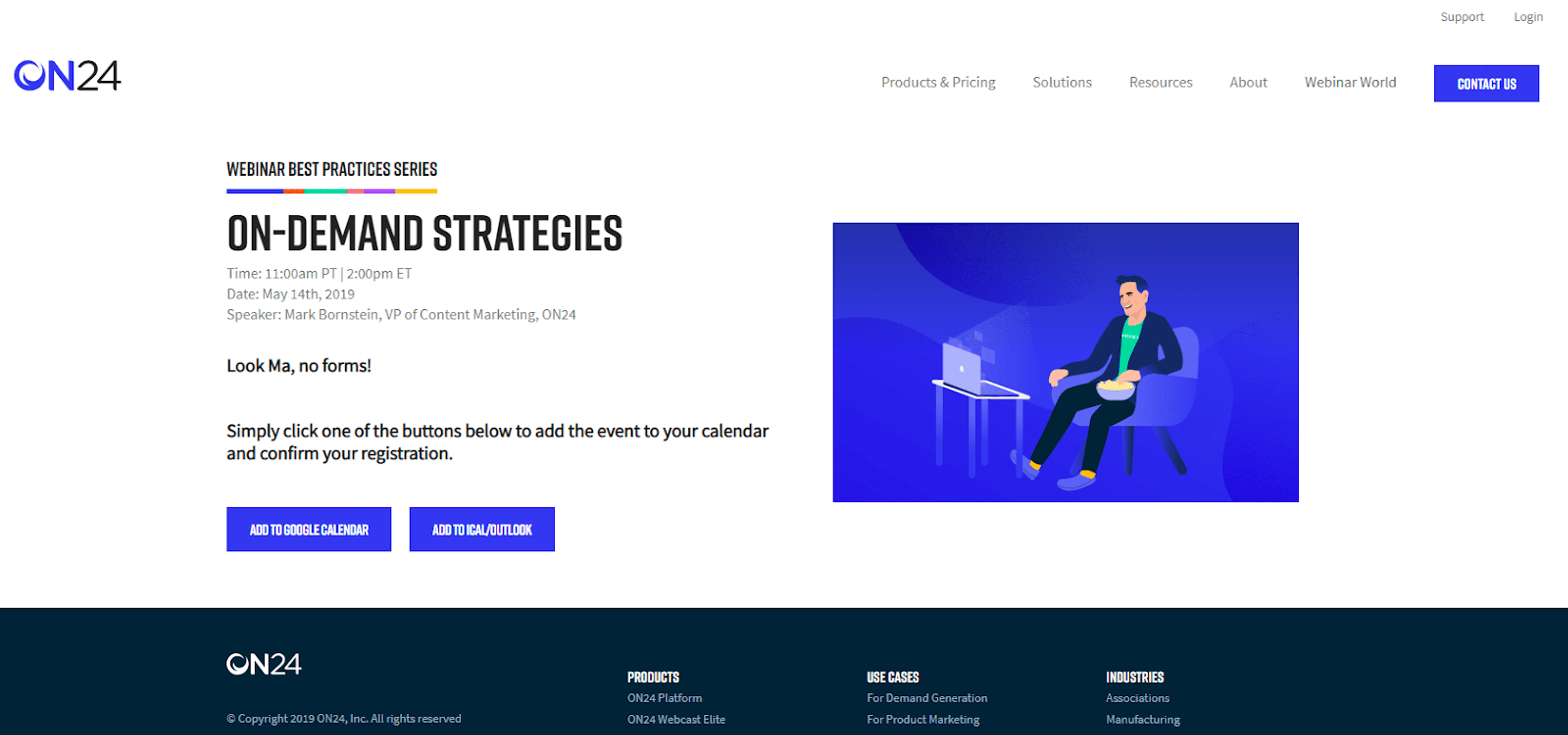
As you plan your digital experience, always think about the next best action that you want someone to take. Hint: the next step after registering for a webinar does not have to be attending that webinar.
Step 2: Accelerate Pipeline Through Digital Event and Webinar Outreach Tactics That Drive Real-time Conversations
When it came to physical events in the pre-COVID days, it was all about waiting. There was a lot of build-up and promotion for that one day or one meetup. Then, after the event, you waited for it to start trickling down into pipeline.
In the digital world, there is no reason to wait.
Once a customer (or future customer) has expressed intent and interest by registering for a webinar, you should acknowledge it and offer them the next best step:
- If you are leveraging account-based marketing (ABM) and you see a high-value account has registered for a webinar – don’t let them sit and wait. Get your sales team involved and get a meeting booked before the webinar happens.
- See a customer poking around your site after they’ve registered for a webinar? Don’t be shy about retargeting them and providing a personalized website experience.
- A buyer is interested, but not ready to become a customer yet? Nurture them with relevant content based on the webinar they signed up for.
Tessa encourages marketers to focus on creating brand interactions that make buyers and customers feel special. Successful B2B vendors are more than just a tool – they are partners.
Step 3: Offer Conversational Calls to Action to Understand Intent
Just because an event is digital, that doesn’t mean it shouldn’t be engaging and offer attendees multiple ways to interact with your brand.
During the event, make sure you are accelerating buyer demand with key calls to action:
- Offer an easy way to book meetings by making your team’s calendars accessible in your event-hosting platform.
- Ask poll or survey questions to gauge attendees’ interest and learn more about them.
- Make Q&A simple and interactive so you can give people the information and education they are seeking out.
- Have your next step ready to go – whether that’s highlighting the next webinar you want them to sign up for or the next piece of content you want them to consume.
- Accelerate conversations with a chatbot or by routing in your sales team where relevant.
80% of B2B buyers expect real-time interaction. So, when you’ve got a captive audience that has expressed interest in your product offering – don’t waste the opportunity.
Step 4: Continue the Conversation Through Post-event Follow up and Nurtures
Of course, interaction and engagement don’t end with the event itself. Just as you would with a physical event, you need to follow up with your digital attendees to continue the conversation.
For high-value target accounts, you want your follow-ups to be meaningful and address any hand-raises they might have demonstrated during the webinar. Did they participate in a poll or ask a question? Include that information in your follow up email. You can also use that email to share additional resources and make it easy for them to take the next step – booking in time with your sales team.
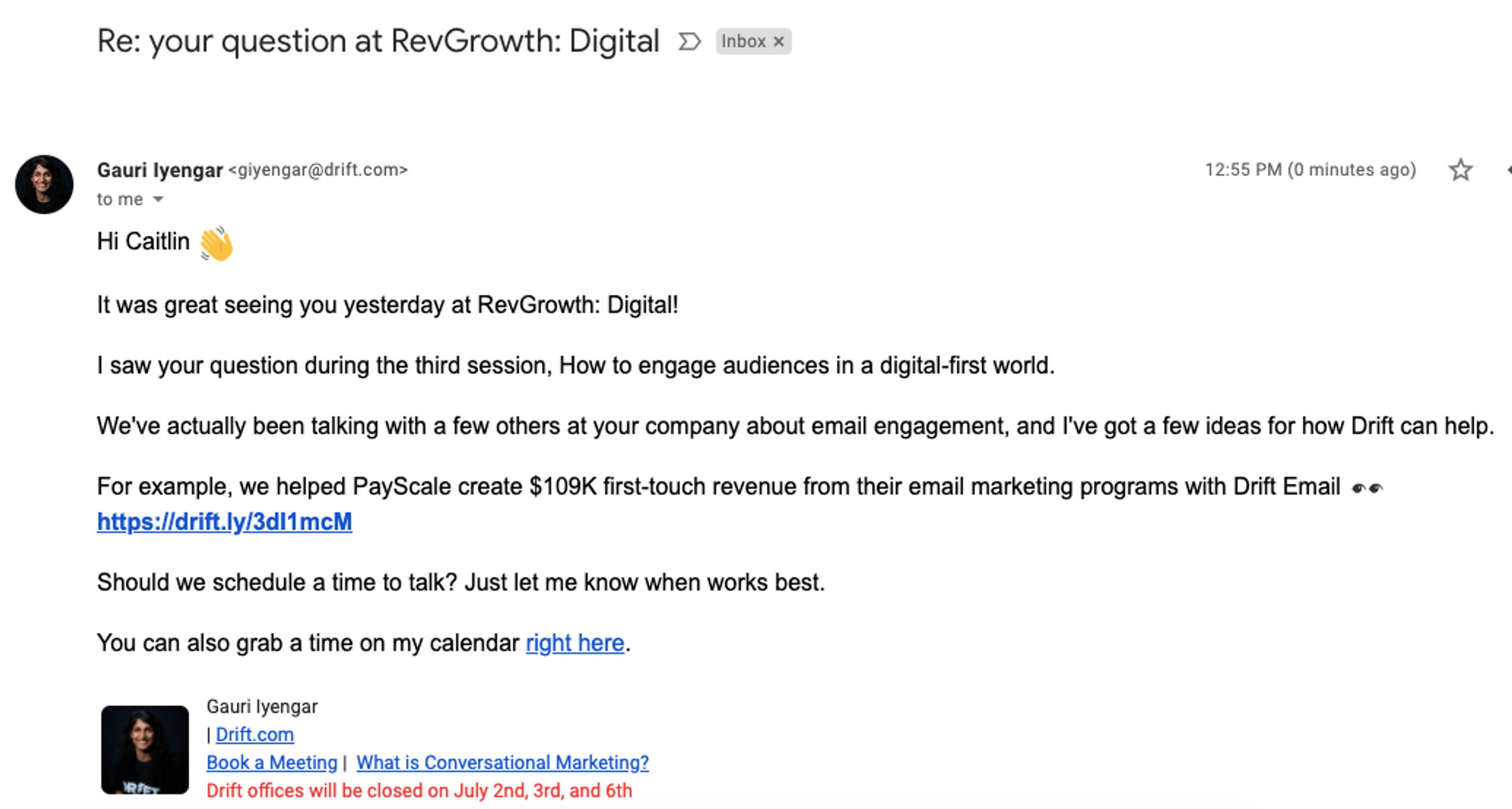
If you are asking poll or survey questions during your webinar, use them to inform meaningful nurture streams. For example, if you’re asking attendees what industry they work in, make sure you use that information to share targeted and personalized content with them down the road.
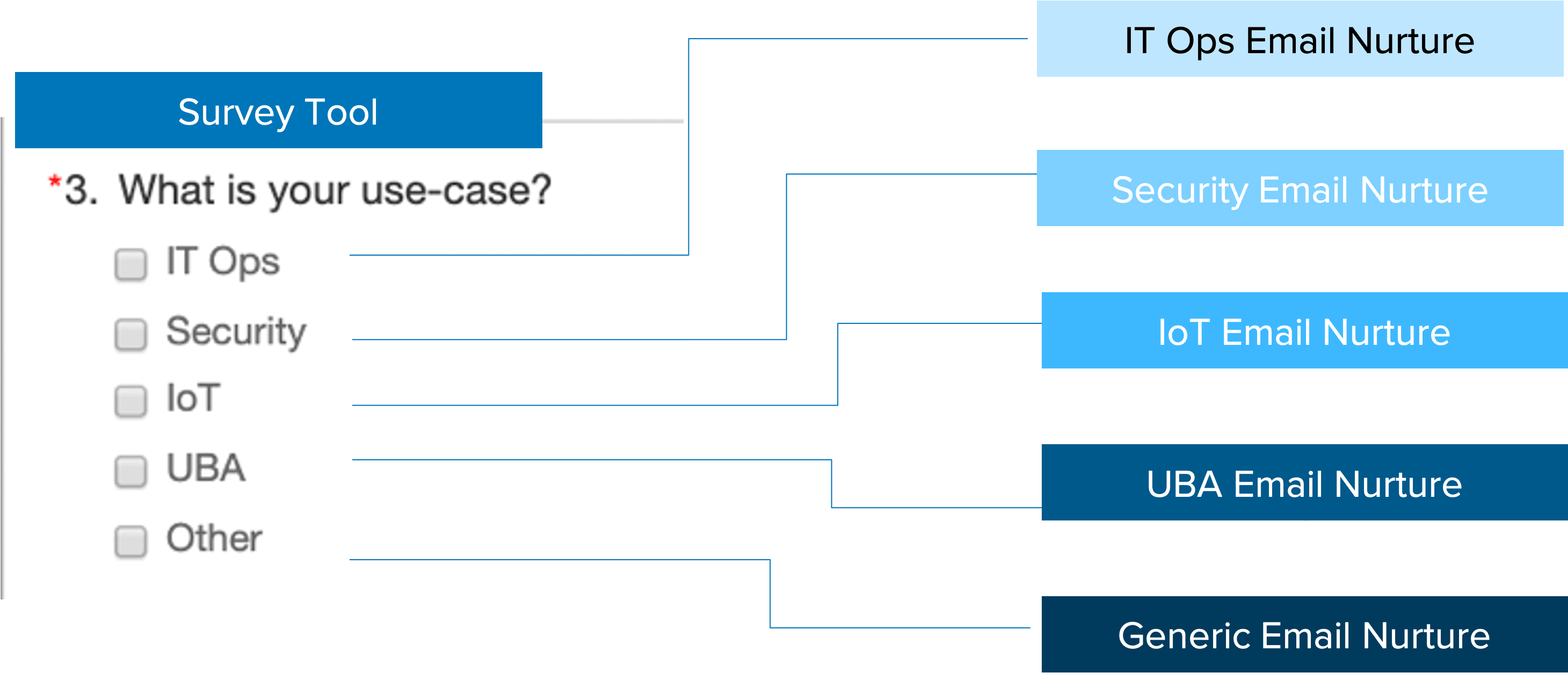
Nurturing a potential customer after an event can be as simple as sharing the recording or it can get more sophisticated based on what you know about them and how valuable an account they are to your company.
Step 5: Understand Your Buyer so You Can Personalize the Entire Journey
Data has long been sold as the key to unlocking marketers’ problems. But, Kate says, it can be a double-edged sword when it’s siloed or not set up for easy or effective usage.
When wielded correctly, data can help you roll out the metaphorical red carpet and offer a personalized experience to your buyers and customers. And this is something consumers are looking for: 83% of consumers are willing to share data to enable a more personalized experience.
The data you use can be explicit and be based on demographics or come from a third-party provider. Or it can be implicit and come from listening to customers and analyzing the conversations you have with them.
The key is to understand what Tessa calls the “digital body language” and paint a holistic picture of your customer’s experience. You need to have visibility into each interaction to understand what their next one should be and, most importantly, understand when they are ready to buy.
With the accelerated advent of digital, it’s important to humanize every interaction and create the most personal buying journey for every customer.






